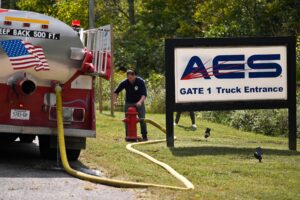
In 1919, a giant tank of molasses exploded, sending a wave of sweet goo traveling 35 miles per hour through a neighborhood in Boston.
During World War I, the company that owned the tank fermented molasses into industrial alcohol, which was then used to make munitions and other weaponry.
The event killed 21 people, some suffocated by syrup.
In 1947, a docked ship holding thousands of pounds of ammonium nitrate — a mixture designed for bombs and later as fertilizer — exploded in Texas City. The blast killed more than 500 people as it extended to homes, businesses, and a Monsanto chemical plant. Afterwards, the state added new safety regulations.
In 2008, a sugar refinery in Georgia exploded, killing 14 people. The plant handled sugar dust, which can be highly combustible.
Over the past 200 years, there have been numerous, fatal explosions in the U.S.
Tennessee now has the country’s deadliest explosion of the 21st century
Explosions happen fairly often. Gas pipelines are a common source, killing an average of about 10 people each year. Large explosions with many fatalities, however, have been uncommon in recent decades.
The Oct. 11 explosion at Accurate Energetic Systems in Hickman County killed 16 people, making it the deadliest explosion in the 21st century, according to official reports of blasts since 2000.
AES handles several types of explosives like TNT, or trinitrotoluene, and at least a component of C-4. AES removed pages about their products and “formulations,” but the information is still available through the Internet Archive. As of Friday, the company had only a homepage mentioning the incident.
Officials have not disclosed what type of explosives were in the building that ignited.
 “Any information that we give to the community, we want to be 100% spot on. So, I will not speculate,” Tyra Cunningham, an agent with the Bureau of Alcohol, Tobacco, Firearms and Explosives, said during a press conference.
“Any information that we give to the community, we want to be 100% spot on. So, I will not speculate,” Tyra Cunningham, an agent with the Bureau of Alcohol, Tobacco, Firearms and Explosives, said during a press conference.
Weapons production is not more dangerous than other manufacturing jobs, nor is it deadlier than other vocations. Logging, fishing and hunting have the highest fatality rates. But explosives work is dangerous and appears more likely to cause multiple fatalities simultaneously. Just two months ago, a blast at an explosives factory in Brazil killed nine people.
Explosions from 1780 to 2025
WPLN reviewed 80 of the deadliest explosions in U.S. history, a list narrowed down to incidents with at least 15 fatalities for comparative analysis.
Steamboats or naval ships accounted for many explosions over the centuries. Of the 16 “boiler” explosions, 13 occurred on a water vessel.
More than a third of the explosions involved the supply chain of fossil fuels, including coal mines, gas pipelines and oil refineries.
Oil refineries and chemical plants have been a primary cause of highly fatal explosions in recent decades. Since 2000, only two explosions outside of the AES tragedy had at least 15 fatalities confirmed: the 2005 Texas City oil refinery explosion and the 2013 West Fertilizer Company explosion in West, Texas — both had 15 fatalities.
About 25 percent of the incidents involved accidental explosions of munitions. All but two of those happened before the year 1950.
Of all 80 explosions reviewed, nearly all were ruled “accidental.”
Officials have not determined whether the AES incident was accidental. The results of such investigations can have implications for industries, sometimes resulting in tighter safety regulations.
Tennessee Gov. Bill Lee has said that the investigation could take months “in an effort to get the answers that people need for closure.”
The Tennessee Emergency Management Agency, which is part of the Department of Military, wrote that AES processes but does “not manufacture” explosives in official reports to the public. The agency did not respond to questions about how it was defining the words “explosives” and “manufacturing.”
The Bureau of Alcohol, Tobacco, Firearms and Explosives did not respond to WPLN’s emailed questions about AES’s permits and licenses.


